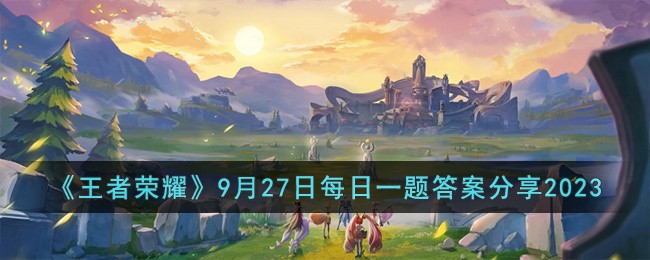You died. That much is obvious in the opening moments of Astra: Knights of Veda, which drops you straight into a war, clashing swords with strangers in suits of armor. Suddenly, just as it starts to seem like this will be another standard medieval hack-and-slash, the warriors around you fall to their knees and transform into grisly, undead versions of their former selves. The zombie-infested battlefield that eventually kills you does a good job of teasing the mystery about to unfold, setting the stage nicely for your resurrection into this tragedy-stricken kingdom. But while Knights of Veda’s detailed world, heart-racing drama, and challenging combat show promise, its overly aggressive grind and unnecessarily complex progression systems dampen the charm.
You play as the Master of the Book, a stereotypical “Chosen One” role given to you by the Goddess Veda, who asks for your help finding the missing pieces of her “heart” after reviving you. She also enlists help from a mini version of herself, a fairy-like companion named Belle, who might give any
Genshin Impact
fans some potentially traumatic Paimon flashbacks. However, Veda’s request sits oddly on the back burner for the majority of the story, instead giving way to the takedown of the corrupt King Magnus and a fight to stop the spread of the Undead. Most of the campaign focuses on uncovering the tantalizing pieces of your missing memories, as well as the truth behind the apocalyptic present, which is a more compelling goal than tracking down the goddess’ heart. I could have done with less of Belle screaming over my shoulder and stating the obvious, like that I’m low on HP, though.
Knights of Veda also weaves in stories about the allies you meet along the way, each with their own agendas, smartly tying them into the kingdom’s larger history. I appreciated the character-focused chapters that extended beyond Veda’s overarching fetch quest, and the story does its best to connect all those dots (even if it’s sometimes in convoluted, soap opera-ish ways). It’s the kind of story that needs a white board to piece together the web of connections, and one I enjoyed better once I embraced a certain suspension of disbelief.
This isn’t your typical cutesy anime RPG, either – Knights of Veda’s hauntingly detailed dark fantasy world shows in its grotesque enemies and corpse-filled landscapes. Instead of rescuing a hostage just in time, you’ll more likely watch a monster crush his head like a tomato. (His bulging eyes and crumpled skull are still stuck in my mind.) Corpses hang from light posts and ravens scatter from decaying bodies as you scamper past. Even at your headquarters, a potbellied villager can be seen solemnly downing a mug of who-knows-what through a doorway. These environments are perfectly crafted to reflect the troubled times of this world in a more graphic way than many games in the genre are willing to.
“
Knights of Veda isn’t always so bold, however, and it took me a bit to get over the hurdle of cliches at the beginning (including Belle’s constant whining during battle). A slow start veils a genuinely intriguing story about how this tragedy-struck nation came to be, the history of the corrupt King Magnus, and how your past self fits into it all. It’s also clever that it manages to subvert the “hero with amnesia” trope that kicks things off by having the memories from your past life actually be relevant to current events! Knights of Veda ends up feeling like the gaming equivalent of a “true crime” show, which was perfect for a fan of that genre like me once I was able to make it past the less thrilling start.
Even still, Knights of Veda focuses most of its complexity on its combat, with side-scrolling action reminiscent of arcade beat ‘em ups alongside the leveling systems and party management more typical of an RPG. You control a team of four characters that you can instantly swap between depending on your strategy. For example, you could deploy shields using a tank character and then swap a damage dealer in to attack enemies from behind that layer of armor. Managing these characters and optimizing their synergies balances nicely with the timely attacks and dodge rolls needed to survive powerful bosses. And while you can bulldoze through the more common baddies with button-mashing, enough enemy variety exists that you’ll still need to adjust battle strategies on the fly often.
Also similar to games like Genshin Impact, Knights of Veda has separate leveling systems for your individual characters, weapons, power-ups, and skills. Each of these requires enhancement materials that you can grind for by replaying chapters in the story. It’s a lot to juggle, but there are some helpful little touches like getting recommendations for which items to level up next if you ever lose a battle. All these upgrade systems helped it feel like I was constantly improving my characters, but they also made it seem like I was constantly running out of resources.
Knights of Veda is a live service game with more on the way. There are currently six chapters that take about 30 hours to complete, assuming you decide to focus on the story by mostly sticking with the same team to minimize the time it takes to level up new characters. This first arc of Knights of Veda tackles the truth behind your role in the current world war and why Magnus did what he did. It neatly wraps up one major mystery while leaving smaller threads and a cliffhanger ending that have me looking forward to coming back for the second arc.
“
About halfway through the current story, however, I started to feel the pain of the grind because of how often I needed to farm for character enhancement materials. Knights of Veda has “MMO-like” leveling, where anything above a three-level difference between you and your enemies is a noticeable challenge, with attacks that will eat significantly more of your HP. It isn’t like some other RPGs, where smart play might let you squeeze by a tough opponent with that kind of level difference. Grinding for materials to overcome those hurdles is typical for free-to-play RPGs and gacha games like this, but ideally they’ll also have systems to make that process less painful, such as an auto-battle option. Knights of Veda doesn’t – or, at least, it doesn’t implement them in a way that makes the grind any easier.
For example, Genshin Impact locks character and weapon enhancement materials behind quick challenges. Only when you start maxing out character skills at the highest levels will it demand you revisit the toughest bosses that take more brain power and reflexes to take down. Meanwhile, Knights of Veda will make you redo a brutal boss battle you only just survived right away in order to obtain basic leveling materials. You can fuse together Adventurer’s Shoes, a currency for collecting enhancement materials, into Hero’s Shoes, which rewards you with more than five times the average amount of drops to quicken the process – but doing so requires 80 out of the 120 maximum Adventurer’s Shoes you can hold. That meant I ended up trading many of the gems I could have used on gacha pulls to get new characters to instead replenish my Adventurer’s Shoes so I could gather more materials at once and not be forced to redo the same battles over and over.
And while there is an auto-battle option to initially speed things up, it becomes useless in later chapters. At first, I thought it could be a helpful tool for effortlessly running through repeated battles to farm materials – but in practice, it’s only good for auto-attacking. The AI powering it doesn’t know to step back when there are too many enemies or avoid environmental hazards, and will gleefully walk into poison without thinking about the damage over time it will cause. If auto-battle at least evaded lightning and similar dangers, it would help automate a larger part of the process, even if I still need to go hands-on for tougher enemies.
Because progression is so slow, I didn’t have the resources to properly experiment with a wider variety of characters. Knights of Veda has a rock-paper-scissors type elemental system that encourages you to consider who you are using when facing different enemies. Unfortunately, I largely had to ignore the elemental pentagons and triangles that balance strengths and weaknesses out of necessity. I would’ve loved to try out more characters, but that would’ve meant hours of grinding to fully level a single one that likely wouldn’t even become a mainstay of my team afterward. As a result, I generally kept three of my four party members the same throughout the campaign, and only swapped the fourth around when I wanted to experiment with those elements.
As a gacha game, your team could be heavily influenced by which characters you manage to randomly pull – for example, I forced my way through the campaign with a 5-star archer named Eliyor I lucked into, but I frequently used free units like Leon and Lucian for support. (Lucian in particular came in clutch with his healing abilities and serviceable Light-based damage.) I unlocked multiple characters as I progressed through the story and completed challenges, so I don’t think the gacha structure is a particular problem here. You get at least 10 pulls for free whenever you hit level 5, level 10, level 15, and so on. I’m not sure my life would have been as easy without Eliyor, of course, but most of my free units were helpful enough that I didn’t feel the need to pay real money for more pulls. Knights of Veda also guarantees you at least one 5-star character from its standard banner after 50 pulls, so that means a chance for everyone to pull their own powerhouse.
Gacha concerns or not, there is plenty to talk about in terms of overall jank. Small optimization issues and bugs weren’t very distracting individually, but Knights of Veda has enough of them that it feels sloppy all together. First off, controller support is only half-finished, so you will need to switch to using a keyboard and mouse for things like navigating between character menus if you play on PC like I did. I got used to that annoyance after a while, and the UI at least tells you when to switch most of the time… if it doesn’t crash first. NPCs in the main town would sometimes show me an unfinished menu before freezing, overlapping text is the norm throughout, and random Korean phrases will sometimes pop up in service messages, so the whole package comes across as unpolished.

















